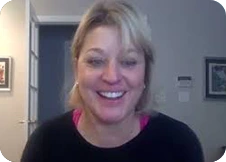In Q3 2023, the average down payment on a house was 14.5%. While some states have seen a hike, other states have seen a decline in median down payments.
More than one-third of Americans believe a 20% down payment is the typical down payment on a house, which is untrue. However, FHA loans, USDA loans, and VA loans have low down payment requirements.
📉 Normal Down Payment on a House
- The average down payment on a house depends on each state. Washington D.C. has the highest down payment at roughly $100,000.
- West Virginia, Louisiana, Alabama, etc are some of the states with the lowest average down payment.
- The data shows that young home buyers usually put lower down payments. Whereas, the older buyers tend to pay higher down payments.
How Much Is the Average Down Payment on a House?
As per NAR’s data, the average down payment on a house for a first-time home buyer is 6%, whereas for repeat home buyers it is 17%. The median home price was $430,300 in Q2 2023.
Your down payment on a home may differ from the national average. The amount of the down payment varies depending on the price of the house, the type of loan, and the state of the housing market at the time.
Find Homes for Sale Under Your Specific Budget
Average Down Payment: 2023 Trend
- The average down payment was at a record high of 14.71% in the third quarter of 2023.
- In the US, the third-quarter median down payment rose to $30,434 from the previous year, an increase of 11.3%.
- The median down payment grew 118% from $13,937 in 2019 to $30,500 in 2023.
Minimum Down Payments and Assistance Programs
The minimum down payment amount varies for different types of loans.
- Conventional loans require you to put down at least 3% as a down payment.
- You must put down a minimum of 10% to get a jumbo loan.
- Conventional ARMs require a minimum down payment of 5%, whereas FHA ARMs require a minimum down payment of 3.5%.
- VA loans and USDA loans are home loans with no down payment requirement.
The government runs various down payment assistance programs. They help low- and moderate-wage earners in their home-buying process.
State-Wise Average Down Payment
The average down payment on a house varies from state to state.
| State | Average Down Payment |
| Alabama | $7,198 |
| Arizona | $30,703 |
| Alaska | $18,162 |
| Arkansas | $11,603 |
| California | $85,179 |
| Colorado | $66,062 |
| Connecticut | $43,033 |
| Delaware | $36,052 |
| Florida | $33,411 |
| Georgia | $15,266 |
| Hawaii | $44,440 |
| Idaho | $61,067 |
| Illinois | $27,963 |
| Indiana | $16,430 |
| Iowa | $27,395 |
| Kansas | $15,353 |
| Kentucky | $15,337 |
| Louisiana | $6,729 |
| Maine | $28,850 |
| Maryland | $25,368 |
| Massachusetts | $86,592 |
| Michigan | $20,637 |
| Minnesota | $37,685 |
| Mississippi | $6,064 |
| Missouri | $15,260 |
| Montana | $72,290 |
| Nebraska | $21,375 |
| Nevada | $32,295 |
| New Hampshire | $61,449 |
| New Jersey | $64,671 |
| New Mexico | $19,624 |
| New York | $49,150 |
| North Carolina | $27,667 |
| North Dakota | $21,536 |
| Ohio | $14,588 |
| Oklahoma | $13,478 |
| Oregon | $52,250 |
| Pennsylvania | $22,679 |
| Rhode Island | $47,467 |
| South Carolina | $21,092 |
| South Dakota | $34,166 |
| Tennessee | $23,151 |
| Texas | $20,188 |
| Utah | $39,782 |
| Vermont | $43,600 |
| Virginia | $29,088 |
| Washington, D.C. | $100,800 |
| Washington | $69,389 |
| Wisconsin | $28,846 |
| Wyoming | $26,900 |
| West Virginia | $6,853 |
Age-Wise Average Down Payment
A younger buyer is likely to put down less money. As buyers age, the typical down payment percentage rises.
| Age (in years) | Median Down Payment |
| 23 – 31 | 8% |
| 32 – 41 | 11% |
| 42 – 56 | 10% |
| 57 – 66 | 20% |
| 67 – 75 | 21% |
| All Homebuyers | 14.5% |
Should You Put Down 20% on a House?
It is not necessary to put down 20% on a home. However, 34% of Americans believe that 20% is the typical down payment on a house.
Having said that, it helps you skip on mortgage insurance. However, some lenders still mandate a 20% down payment on conventional mortgages.
Pros of Putting Down 20%
A 20% down payment can be beneficial in a number of ways:
- It increases the amount of equity in the home and reduces debt.
- It helps you with lower monthly mortgage payments.
- Putting more money down helps you get lower interest rates.
Cons of putting down 20%
A large down payment may not be an affordable option for a lot of home buyers since it may cause financial complexities in the future. It is better to weigh the cons before you opt for a 20% down payment.
- A large down payment can be heavy on your pocket. If there’s any chance of requiring that money later, you should avoid putting down 20%.
- This also means you’ll have less money for repairs, maintenance, and other unanticipated costs.
Bottom Line
One of the most significant barriers to purchasing a home for many buyers is saving for a down payment. Moreover, the average down payment for a house varies state-wise. Apart from this, young buyers tend to put down a low down payment, whereas older buyers put down more.
Find Your New Home With Houzeo
With thousands of property listings, Houzeo.com is one of the biggest property listing sites in the US. Find condos, townhouses, co-ops, and other types of homes for sale on Houzeo.
» Need More Clarity? Read these exclusive Houzeo reviews and learn why the platform is the best in America’s competitive housing market.
Frequently Asked Questions
How much down payment on a house is worth $300,000?
Considering you are a repeat buyer, your down payment will be around $51,000.
What is a good down payment for a house?
While it's better to put down as much as possible, it's advisable to put down around 14% to get better mortgage rates.
How much is a down payment for a first-time homebuyer?
The median down payment for a first-time buyer is 6%. Suppose you buy a house for $500,000, your down payment will be $30,000.














.webp)
